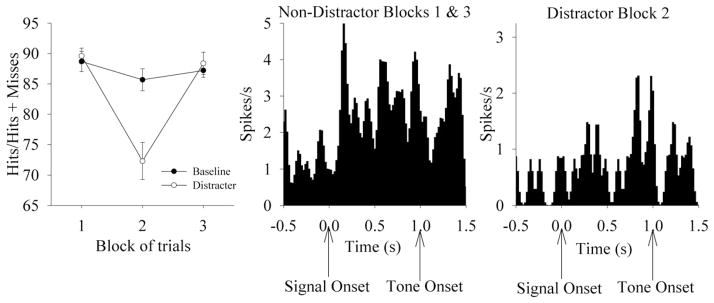Fig. 5.
Behavioral performance and neurophysiological responses in the presence and absence of a visual distractor. Left: Sustained attention performance across blocks of trials during Baseline and testing conditions, as expressed in relative number of hits (mean±S.E.M.) across trial blocks under baseline and distractor testing conditions. Middle. Detection-associated activity of a single neuron during the first and third (non-distractor) blocks of trials (40 hit trials, 89% accuracy). The firing rate of this unit increases following the signal on hit trials. Format is the same as Fig. 3. Right: Detection-associated activity of this neuron following the signal in the presence of the visual distractor (19 hit trials, 70% accuracy).

